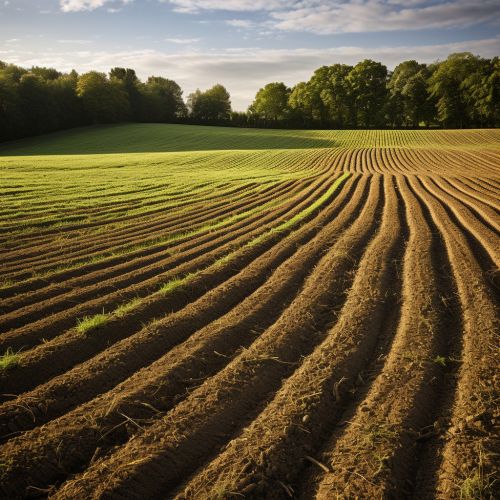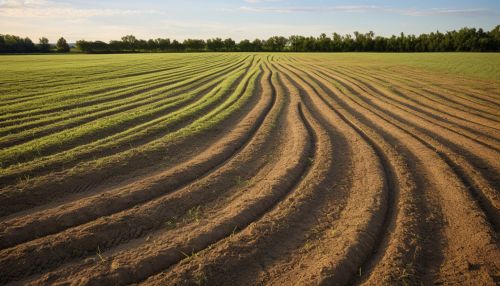Contour plowing
Introduction
Contour plowing, also known as contour farming, is a farming practice aimed at conserving soil and water. This method of plowing involves plowing and planting across a slope following its elevation contour lines. These contour lines create a water break which reduces the formation of rills and gullies during times of heavy water run-off; which is a major cause of soil erosion. The water break also allows more time for the water to settle into the soil. In contour plowing, the ruts made by the plow run perpendicular rather than parallel to the slopes, generally resulting in furrows that curve around the land and are level. This method is also known for reducing the workloads of both humans and animals.
History
The practice of contour plowing is believed to have been practiced by the ancient Phoenicians, and is known to have been applied at times in the civilizations of the ancient Greeks and Romans. However, the benefits of contour plowing were not appreciated until the 20th century when soil erosion became a significant issue. In the United States, contour plowing was promoted by the Soil Conservation Service, now the Natural Resources Conservation Service (NRCS), an agency of the United States Department of Agriculture.
Methodology
Contour plowing is most effective on slopes between two and ten percent. The rows formed slow water run-off during rainstorms to prevent soil erosion and allow the water time to settle into the soil. In addition to its effects on run-off, the technique can also improve the structure of the soil over time. The furrows formed by contour plowing are generally more level than those formed by down-slope plowing, reducing the rate of soil erosion.
Benefits
Contour plowing can bring many benefits to agricultural operations. These include:
- Reduced soil erosion: By slowing the flow of water, contour plowing can significantly reduce soil erosion, which can degrade the quality of agricultural land and reduce crop yields.
- Improved water retention: Contour plowing can help to increase the amount of water that infiltrates the soil, improving soil moisture levels and reducing the need for irrigation.
- Increased crop yields: By improving soil quality and moisture levels, contour plowing can help to increase crop yields, making agricultural operations more productive and profitable.
- Enhanced biodiversity: By reducing soil erosion and improving soil quality, contour plowing can also help to enhance biodiversity, providing benefits for wildlife as well as for farming.
Limitations
While contour plowing has many benefits, it also has some limitations. These include:
- It is not suitable for all types of land. Contour plowing is most effective on land with a slope of between 2% and 10%. On steeper slopes, other methods of soil conservation may be more effective.
- It requires careful planning and execution. To be effective, contour plowing must be carried out correctly. This requires careful planning and execution, which can be time-consuming and require a certain level of skill and experience.
- It may not be suitable for all types of crops. Some crops may not be suitable for contour plowing, depending on their root structure and other factors.


